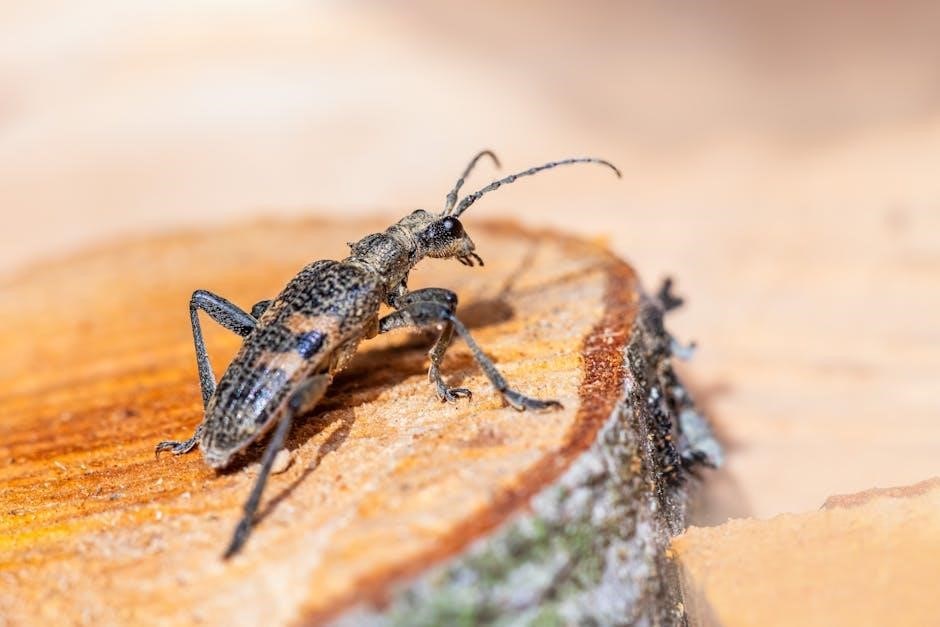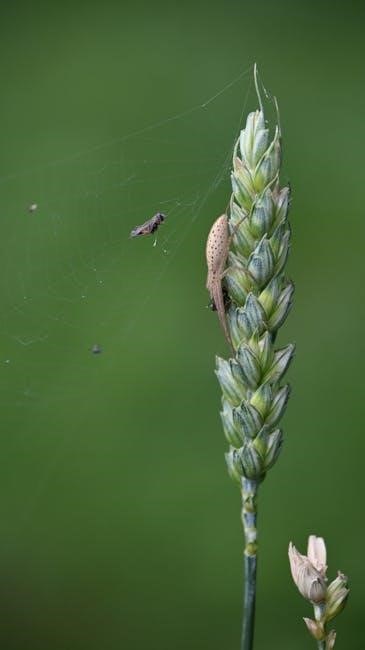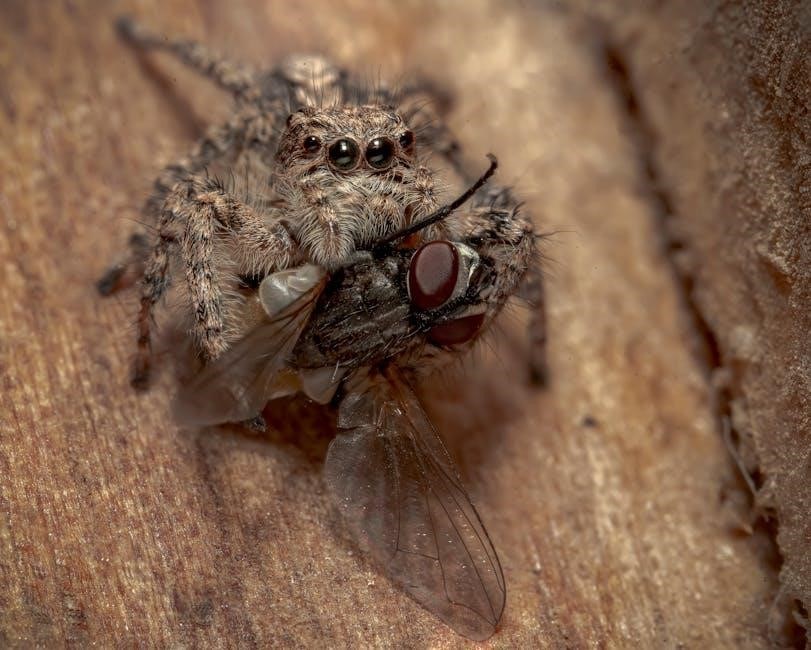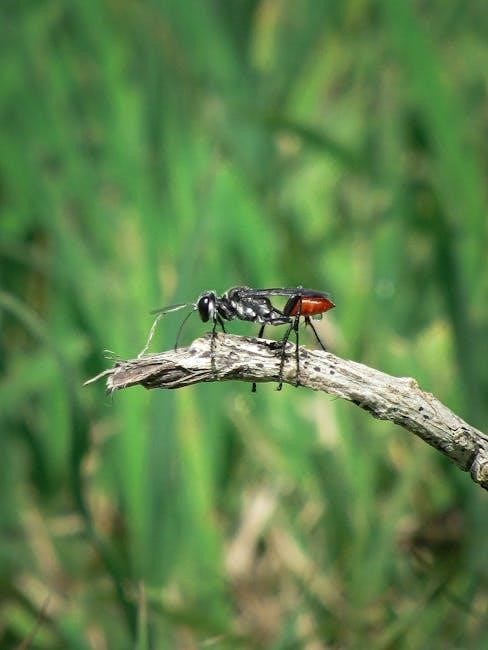Overview of “The Spider and the Fly”
Mary Howitt’s “The Spider and the Fly,” published in 1828, presents a cautionary tale. The poem warns against flattery and manipulation. A cunning spider uses charm to lure a naive fly into its parlor, a deadly trap. The story reinforces the importance of discerning true intentions.
“The Spider and the Fly” unfolds as a dialogue between the titular characters. The spider, through persistent and artful flattery, attempts to entice the fly into its parlor, described as a beautiful and inviting space. Initially, the fly resists, recognizing the inherent danger, recalling warnings about those who enter the spider’s dwelling never to return.
However, the spider’s cunning words and false expressions of affection gradually wear down the fly’s defenses. He praises her beauty, her wings, and her bright eyes. The fly, succumbing to vanity and the spider’s persuasive charm, eventually enters the parlor. The spider then reveals its true intentions, trapping and devouring the fly.
The poem concludes with a moral lesson. It cautions readers, particularly children, against succumbing to flattery and deceit. It emphasizes the importance of heeding warnings and recognizing the true nature of those who may seek to manipulate or harm us.
Author Mary Howitt and Context
Mary Howitt (1799-1888), the author of “The Spider and the Fly,” was a prolific English writer known for her poems, stories, and translations. Born Mary Botham in Gloucestershire, she was raised in a Quaker family, which instilled in her strong moral values and a commitment to peace. These values often permeated her literary works, particularly those intended for children.
“The Spider and the Fly,” published in 1828, emerged during a period when didactic literature for children was gaining popularity. Authors sought to impart moral lessons and shape young minds through engaging narratives. Howitt’s poem reflects this trend, utilizing a simple yet compelling story to convey a cautionary message about the dangers of flattery and deception.
Her writing often explored themes of nature, morality, and the importance of family. Her contributions to children’s literature cemented her legacy as a significant voice in 19th-century English literature.

Themes and Literary Analysis
“The Spider and the Fly” explores themes of deception and flattery, cautioning against naivety. The poem employs personification, giving human traits to animals. This enhances the moral lesson, making it relatable and memorable for young readers.
The Dangers of Flattery and Deception
Mary Howitt’s “The Spider and the Fly” serves as a potent allegory for the dangers of succumbing to flattery and deception. The spider, a cunning predator, employs a calculated strategy of insincere compliments and alluring promises to ensnare the unsuspecting fly. This highlights how manipulative individuals often use charm to mask their true, malicious intentions.

The fly, initially wary, gradually succumbs to the spider’s sweet words, demonstrating the seductive power of flattery. The poem underscores the importance of recognizing insincerity and remaining vigilant against those who attempt to exploit vulnerabilities. It serves as a reminder that appearances can be deceiving, and it is crucial to look beyond superficial charm to discern genuine character.
The spider’s elaborate praise of the fly’s beauty and talents is a classic example of manipulative flattery. The fly’s eventual demise illustrates the tragic consequences of letting one’s guard down and falling prey to deceptive words, emphasizing the need for critical thinking.
Moral Lesson and Cautionary Tale
“The Spider and the Fly” functions as a quintessential cautionary tale, imparting a significant moral lesson about the perils of naivety and the importance of heeding warnings. The poem’s narrative vividly illustrates the consequences of ignoring one’s instincts and succumbing to the allure of deceptive charm. The fly’s tragic fate serves as a stark reminder that appearances can be deceiving, and not all who offer kindness have genuine intentions.
The moral lesson is clear: be wary of those who use flattery to manipulate you. The poem encourages readers, especially children, to exercise caution and critical thinking when faced with enticing offers or compliments. The fly’s inability to recognize the spider’s true nature leads to its demise, highlighting the importance of skepticism and the potential dangers of blind trust.
By presenting a gruesome ending, Howitt reinforces the gravity of the lesson, underscoring the potentially devastating consequences of ignoring sound advice and succumbing to temptation.
Use of Personification and Imagery
Mary Howitt masterfully employs personification and vivid imagery to bring “The Spider and the Fly” to life, enhancing its moral lesson and cautionary message. Personification is evident in the spider and the fly, both granted human-like qualities and speech, allowing them to engage in a dialogue that underscores the poem’s central conflict. The spider, with his cunning and manipulative words, embodies deceit, while the fly represents naivety and vulnerability.
The poem is rich in imagery, creating a vivid picture of the spider’s “parlour” and the fly’s eventual demise. Descriptions of the “winding stair,” “pretty curtains,” and “little bed” evoke a sense of false comfort and security, masking the danger that lurks within. The imagery surrounding the spider’s actions, such as weaving his “subtle web,” further emphasizes his predatory nature and the fly’s increasing entanglement.
The use of these literary devices elevates the poem beyond a simple narrative, making it a memorable and impactful lesson about the importance of caution and discernment.

Adaptations and Interpretations
“The Spider and the Fly” has seen numerous adaptations and interpretations. Tony DiTerlizzi’s illustrated version is notable. The poem’s themes resonate, inspiring parodies and related works that explore flattery’s dangers. These adaptations keep Howitt’s cautionary tale relevant for modern audiences.
Tony DiTerlizzi’s Illustrated Version
Tony DiTerlizzi’s illustrated rendition of “The Spider and the Fly” brings Mary Howitt’s classic cautionary poem to life with stunning visual interpretations. Published in 2002, this version earned a Caldecott Honor, recognizing its excellence in illustration. DiTerlizzi’s artwork amplifies the poem’s dark and suspenseful atmosphere, captivating readers of all ages.
His detailed and expressive illustrations vividly portray the cunning spider and the naive fly, enhancing the emotional impact of their interaction. The artwork underscores the spider’s deceptive charm and the fly’s growing vulnerability. DiTerlizzi’s unique artistic style blends gothic and whimsical elements, creating a visually arresting experience. The illustrations not only complement the poem’s narrative but also add layers of meaning, making it a memorable and impactful adaptation. Readers can fully immerse themselves in the story’s cautionary message through DiTerlizzi’s artistic vision. The collaboration elevates the poem, solidifying its place in children’s literature and beyond. This version remains a popular and critically acclaimed interpretation.
Parodies and Related Works
“The Spider and the Fly” has inspired numerous parodies and related works, attesting to its enduring cultural impact. Its simple yet profound moral lesson makes it ripe for adaptation and satire across various media. One notable example is “The Lobster Quadrille” from Lewis Carroll’s “Alice’s Adventures in Wonderland,” which shares thematic similarities with Howitt’s poem, employing a similar structure of invitation and deception.
These parodies often play on the original’s cautionary tone, using humor to highlight the dangers of manipulation and flattery. Other works draw inspiration from the poem’s characters and plot, reimagining the spider and the fly in different contexts. Such adaptations demonstrate the poem’s timeless relevance and its ability to resonate with audiences across generations. By subverting the original’s serious message, these parodies offer a fresh perspective on its themes, encouraging critical thinking and prompting reflection on the nature of power dynamics. The poem’s influence extends beyond literature, informing visual arts, music, and even political commentary, showcasing its lasting legacy in popular culture.

Educational Resources
For educators, “The Spider and the Fly” offers rich material. Resources include lesson plans exploring themes of deception. Printable PDFs of the poem are widely available. These support literacy and critical thinking skills. They also facilitate discussions about morality.
Teaching the Poem to Children
Introducing “The Spider and the Fly” to children requires a sensitive approach, emphasizing the poem’s moral without causing undue fear. Start by reading the poem aloud, using expressive tones to capture the characters’ personalities. Discuss the spider’s persuasive language and the fly’s initial hesitation.
Engage children by asking them to identify the spider’s flattering words and explain why they are deceptive. Encourage them to consider how the fly could have avoided the trap. Illustrate the poem’s themes through visual aids, such as drawings or puppets, to help younger children grasp the concepts of manipulation and trust.
Activities like creating a storyboard of the poem’s events can reinforce comprehension. Discuss real-life scenarios where flattery might be used to mislead. Emphasize the importance of critical thinking and seeking advice from trusted adults when faced with uncertain situations. Conclude with a discussion about the poem’s lasting message.
Consider using Tony DiTerlizzi’s illustrated version to enhance engagement, as its visuals can make the poem more accessible and captivating for young readers.
Availability of PDF versions
Numerous online resources offer PDF versions of “The Spider and the Fly,” making the poem easily accessible for educational and personal use. Many websites, including those dedicated to classic literature and poetry, provide free downloadable PDFs suitable for printing and sharing. These versions often include the original text by Mary Howitt, sometimes accompanied by illustrations or annotations.
Educational platforms and teacher resource sites also host PDF versions designed for classroom instruction. These may include supplementary materials such as comprehension questions, vocabulary lists, and activity suggestions to enhance learning. Digital libraries and online archives are another valuable source for finding PDF copies of the poem, often in scanned versions of original publications.
When searching for a PDF, it’s advisable to ensure the source is reputable to avoid copyright issues or inaccurate transcriptions. Some versions may also be available through online bookstores or digital retailers, potentially offering higher-quality formatting and additional features.
The widespread availability of PDF versions ensures that “The Spider and the Fly” remains a readily accessible resource for readers of all ages.
